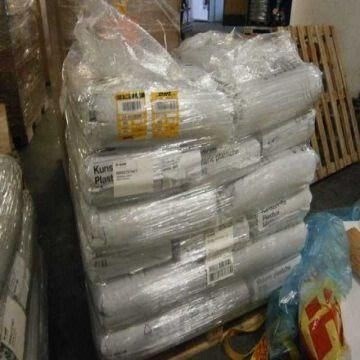Will BASF's Nylon 66 Force Majeure Impact the Domestic Market?
Duration of force majeure at BASF's nylon 66 UK production facility uncertain at moment.

Last week, BASF declared force majeure at its Seals Sands, UK facility on hexamethylenediamine (HMD), nylon salt, and nylon 66 polymers and compounds supplied here from Europe under the Ultramid A and Capron PA66 brands.
The company cited production problems at its 276-million lb/yr plant for its action, which went into effect June 17. It also noted that it was not in a position to predict how long the force majeure situation is likely to last, but that it would update its customers as soon as possible.
I checked in with Mark Kallman, v.p. of client services for engineering resins, PS, and PVC at Resin Technology, Inc. (RTi), who is a key source for keeping us up to date on resin pricing trends based on major fundamentals such as the balance of supply and demand. Both at the end of first quarter and as we are closing in on the end of the second, Kallman has noted that domestic nylon 66 supply is relatively balanced and that demand has been good, and is already trending to be a bit above 2014.
But, he also clarified that when he describes the market as balanced, he includes the nylon 66 materials imported to the North American market by BASF. As such, Kallman ventures that if the plant’s restart is delayed more than a few weeks, the domestic market will be impacted by supply constraints.
As for pricing, nylon 66 prices dropped a few percent during first quarter, and have been primarily flat with a bit of a downslide in some cases through this quarter. An attempt by suppliers in mid-April to push through a 15ȼ/lb increase following a force majeure action by Invista, failed as it did not affect resin availability. Prior to last week’s BASF force majeure action, Kallman was projecting a largely flat trend in prices to continue into third quarter. This may now change depending on the duration of this latest industry production disruption, along with factors such as the trajectory of feedstock costs.
Want to find or compare materials data for different resins, grades, or suppliers? Check out Plastics Technology’s Plaspec Global materials database.
Related Content
-
Medical Tubing: Use Simulation to Troubleshoot, Optimize Processing & Dies
Extrusion simulations can be useful in anticipating issues and running “what-if” scenarios to size extruders and design dies for extrusion projects. It should be used at early stages of any project to avoid trial and error and remaking tooling.
-
Medical Molder, Moldmaker Embraces Continuous Improvement
True to the adjective in its name, Dynamic Group has been characterized by constant change, activity and progress over its nearly five decades as a medical molder and moldmaker.
-
Foam-Core Multilayer Blow Molding: How It’s Done
Learn here how to take advantage of new lightweighting and recycle utilization opportunities in consumer packaging, thanks to a collaboration of leaders in microcellular foaming and multilayer head design.















